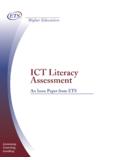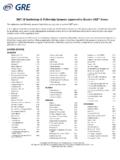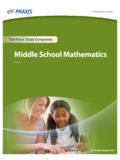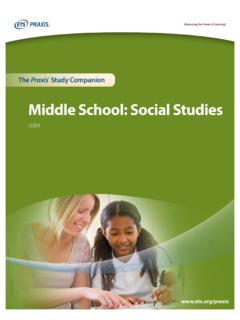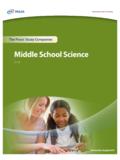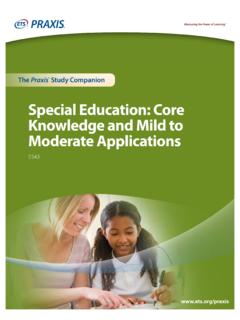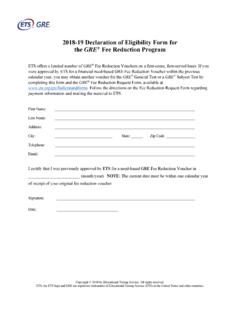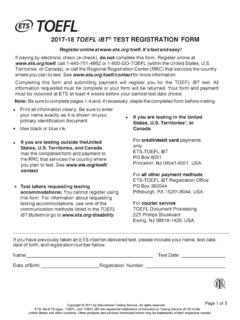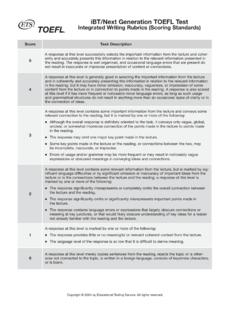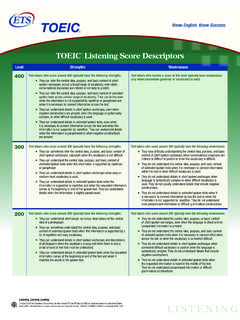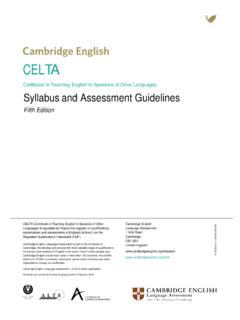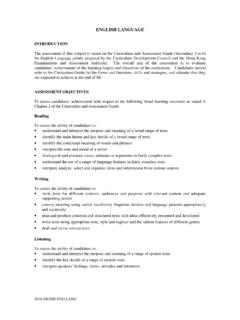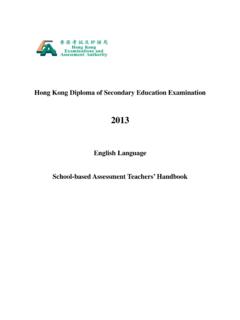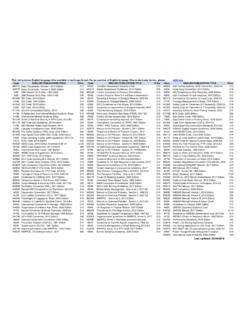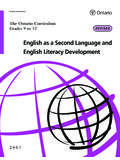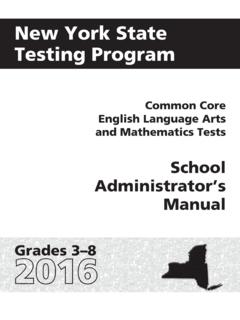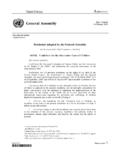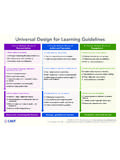Transcription of Guidelines for the Assessment of English …
1 Guidelines for theAssessment of English language LearnersCopyright 2009 by Educational Testing Service. All rights reserved. ETS, the ETS logo and LISTENING. LEARNING. LEADING. are registered trademarks of Educational Testing Service (ETS). 10641 Copyright 2009 Educational Testing Service. All rights reserved. ETS, the ETS logo, and LISTENING. LEARNING. LEADING. are registered trademarks of Educational Testing Service (ETS). Guidelines for the Assessment of English language Learners PrefaceThe proper Assessment of our nation s more than 5 million English language Learners (ELLs) merits attention at all levels in our education systems. It is critically important that the array of content assessments taken by ELLs be fair and valid. That is no easy task, but it is key to improving educational opportunities for language -minority students. Fortunately, Educational Testing Service has published this new comprehensive guide. It will be of great value to test developers, test administrators, educators, education policymakers and others.
2 The 27-page Guidelines for the Assessment of English language Learners is the latest in a series of research-based ETS publications that address quality issues as they relate to fairness and equity in are students who are still developing proficiency in English . They represent one in nine students in classrooms from pre-kindergarten through grade 12, but most are concentrated in the lower grades. Collectively, they speak about 400 languages, although approximately 80 percent are native speakers of Spanish. Persons of Asian descent primarily speakers of Mandarin, Cantonese, Hmong and Korean account for about 5 percent of the balance of the ELL population. While most of these students are found in large urban centers, many others live in concentrations in smaller communities. English - language learners are concentrated in six states Arizona, California, Texas, New York, Florida and Illinois. The ELL students in those six states account for more than 60 percent of the ELL principal author and Senior Research Scientist and Research Director John Young notes, The federal government s No Child Left Behind legislation of 2001 has made the need to produce valid and fair assessments for ELLs a matter of pressing national concern.
3 So we produced a framework to assist practitioners, educators, test developers and educators in making appropriate decisions on Assessment of ELLs in academic content areas. The No Child Left Behind Act, or NCLB, includes ELLs as one of the mandated subgroups whose test scores are used to determine whether schools and school districts throughout the United States are meeting goals for what the law refers to as adequate yearly progress (AYP) based on state-level performance standards established for their almost all assessments measure language proficiency to some degree, the Guidelines point out, ELLs may receive lower scores on content area assessments administered in English than they would if they took the same tests in a language in which they were that is why the new guide is so important: it helps educators assess students mastery of subject matter while minimizing the role of the student s English proficiency in its measurement. These Guidelines are the latest in a series of actions that ETS has taken in recent years to support the pursuit of quality, fairness and accuracy in English - language learner assessments.
4 One such program was a 2008 symposium, The language Acquisition and Educational Achievement of English language Learners, co-convened by ETS and the National Council of La Raza (NCLR). NCLR Vice President for Education Delia Pompa shares my view that ETS renders a great service in issuing these Guidelines . They are a welcome and much needed addition to our collective knowledge following our ETS-NCLR ELL symposium last year, and will advance teaching and testing for ELL practitioners everywhere. In commending ETS for this extremely valuable publication, I urge all ELL stakeholders to read it and take full advantage of its recommendations. All of our learners deserve the best opportunities we can provide. Fair and valid assessments are a key ingredient in that Hakuta, L. Jacks Professor of EducationStanford University Copyright 2009 Educational Testing Service. All rights reserved. ETS, the ETS logo, and LISTENING. LEARNING. LEADING. are registered trademarks of Educational Testing Service (ETS).
5 The Guidelines for the Assessment of English - language Learners were authored by Mary J. Pitoniak, John W. Young, Maria Martiniello, Teresa C. King, Alyssa Buteux, and Mitchell Ginsburgh. The authors would like to thank the following reviewers for their comments on an earlier version of this document: Jamal Abedi, Richard Duran, Kenji Hakuta, and Charlene Rivera. The authors would also like to acknowledge Jeff Johnson and Kim Fryer for the application of their excellent editing skills. Contents 1 Key 4 Factors Influencing the Assessment of English language 6 Planning the 8 Developing Test Items and Scoring 12 External Reviews of Test Evaluating the Tasks Through 15 Scoring Constructed-Response 19 Testing Accommodations for English language 22 Using Statistics to Evaluate the Assessment and 25 27 28 Copyright 2009 Educational Testing Service. All rights reserved. ETS, the ETS logo, and LISTENING. LEARNING.
6 LEADING. are registered trademarks of Educational Testing Service (ETS). 1 Introduction Purpose and Audience English language learners (ELLs) students who are still developing proficiency in English represent a large and rapidly growing subpopulation of students in classrooms. Accordingly, they are also a key group of students to consider when designing and administering educational assessments. The Guidelines in this document are designed to be of use to test developers, testing program administrators, psychometricians, and educational agencies as they work to ensure that assessments are fair and valid for ELLs. These Guidelines focus on large-scale content area assessments1 administered in the United States to students in grades K-12; however, many of the principles can be applied to other populations and other assessments. These Guidelines assume a basic knowledge of concepts related to educational testing. However, some sections may be more relevant to a given group of practitioners than others and some sections for example, the section on statistical considerations may call for familiarity with technical concepts.
7 We hope that these Guidelines will encourage those involved with educational Assessment to keep ELLs in mind throughout the development, administration, scoring, and interpretation of assessments, and that these Guidelines will ultimately lead to better Assessment practices for all students. Readers should use these Guidelines in conjunction with other ETS Guidelines and resources that discuss best practices in testing. These ETS documents include, but are not limited to, the following: ETS Standards for Quality and Fairness ETS Fairness Review Guidelines ETS International Principles for Fairness Review of Assessments ETS Guidelines for Constructed-Response and Other Performance Assessments Background ELLs comprise a large and growing subpopulation of students. As of the 2006-07 school year, there were more than 5 million ELLs in prekindergarten (PK) to grade 12 classrooms, with a greater concentration of ELLs at the lower grade levels. These students represent 1 in 9 students in classrooms.
8 They are projected to represent 1 in 4 students by the year 2025. In California, it is already the case that more than 25% of the students in grades PK-12 are ELLs. Nationally, about 80% of ELLs are native speakers of Spanish, but overall, ELLs speak about 400 different home languages. 1 Within this document, the terms Assessment and test are used interchangeably. Guidelines for the Assessment of English language Learners 2 With the passage of the federal No Child Left Behind (NCLB) legislation in 2001 and with the increasing emphasis on accountability testing in general the need to produce valid and fair assessments for ELLs has become a matter of pressing national concern. Under NCLB, the academic progress of ELLs is assessed in two ways: (1) Under Title I, ELLs are one of the mandated subgroups whose test scores are used to determine whether schools and districts are meeting the goals for adequate yearly progress (AYP) based on state-level performance standards established for their students.
9 ELLs are held to the same expectations as other subgroups regarding participation and attainment of proficiency on selected content area assessments (although ELL students are allowed a grace period during which the scores will not count). (2) Under Title III, ELLs must also demonstrate progress in attaining English language proficiency. The main purpose of these Guidelines is to provide testing practitioners, as well as other educators, with a framework to assist in making appropriate decisions regarding the Assessment of ELLs in academic content areas, including but not exclusively as specified under Title I. These Guidelines do not focus on assessing English language proficiency, as defined under Title III. Validity Issues in Assessing ELLs As noted in the ETS Standards for Quality and Fairness, validity is one of the most important attributes of an Assessment . Validity is commonly referred to as the extent to which a test measures what it claims to measure. For ELLs, as well as for all populations, it is critical to consider the degree to which interpretations of their test scores are valid reflections of the skill or proficiency that an Assessment is intended measure.
10 Although there are several validity issues related to the Assessment of ELLs, the main threat when assessing academic content areas stems from factors that are irrelevant to the construct the skills or proficiency being measured. The main goal of these Guidelines is to minimize these factors termed construct-irrelevant variance and to ensure that, to the greatest degree possible, assessments administered to ELLs test only what they are intended to test. Since almost all assessments measure language proficiency to some degree, ELLs may receive lower scores on content area assessments administered in English than they would if they took the same tests in a language in which they were proficient. For example, an ELL who has the mathematical skills needed to solve a word problem may fail to understand the task because of limited English proficiency. In this case, the Assessment is testing not only mathematical ability, but Guidelines for the Assessment of English language Learners 3 also English proficiency.
